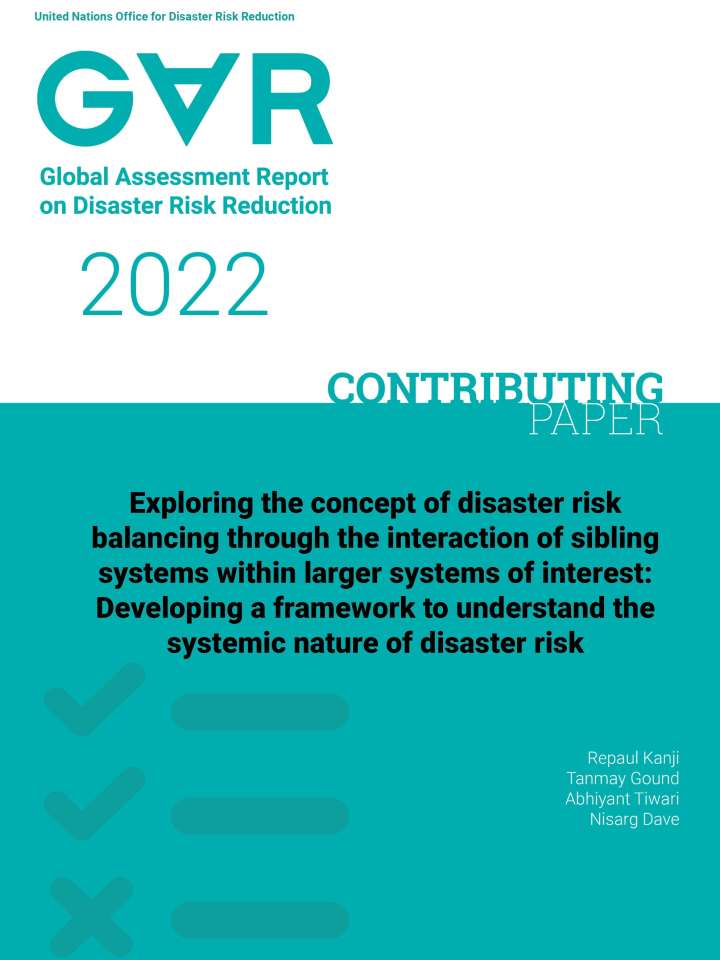Exploring the concept of disaster risk balancing through the interaction of sibling systems within larger systems of interest: Developing a framework to understand the systemic nature of disaster risk
This contributing paper examines how different constituent systems (sibling systems) of a larger system react and propagate reverberations affecting the overall system using a novel visualisation tool – Sibling System State Diagram (SSSD). The tools that are currently used to assess disaster risk have major limitations, like the inability to model the system under consideration as a ‘system of systems’ (as in Causal Loop Diagram) or the lack of temporal dimension (as in Network Analysis). In this study, the researchers make an attempt to model the old city of Ahmedabad as a ‘system of systems’ and depict the systemic consequences of disaster risk reduction decisions in the context of COVID-19.
The paper finds that sibling systems which suffers the largest blows can be identified - for example, simulating the aftermath of COVID-19, it is clear that certain sibling systems need to be reconsidered during the early recovery or recovery phase. The systems in place are inadequate to address a number of issues like – absence social safety nets to provide income assurance to people in need, absence of provisions to ensure availability of and accessibility to basic needs etc. The pandemic has also affected other sibling systems in a differential mode – those enjoying the luxury of access to technology have had no issues to switch over to a digital mode of education, but the same cannot be said about everyone, and, existing inequalities have been further broadened due to COVID-19. To understand the manifestation and translation of systemic disaster risk, communities also need to be seen and modelled as system of systems. Adequate modelling of communities would open up avenues of simulating disaster risk governance decisions, possibilities of balancing disaster risk – a way forward towards building resilience.
